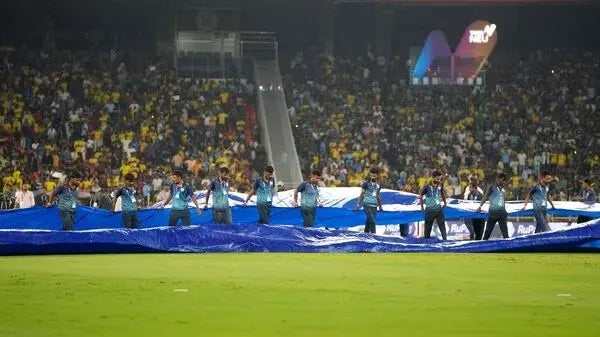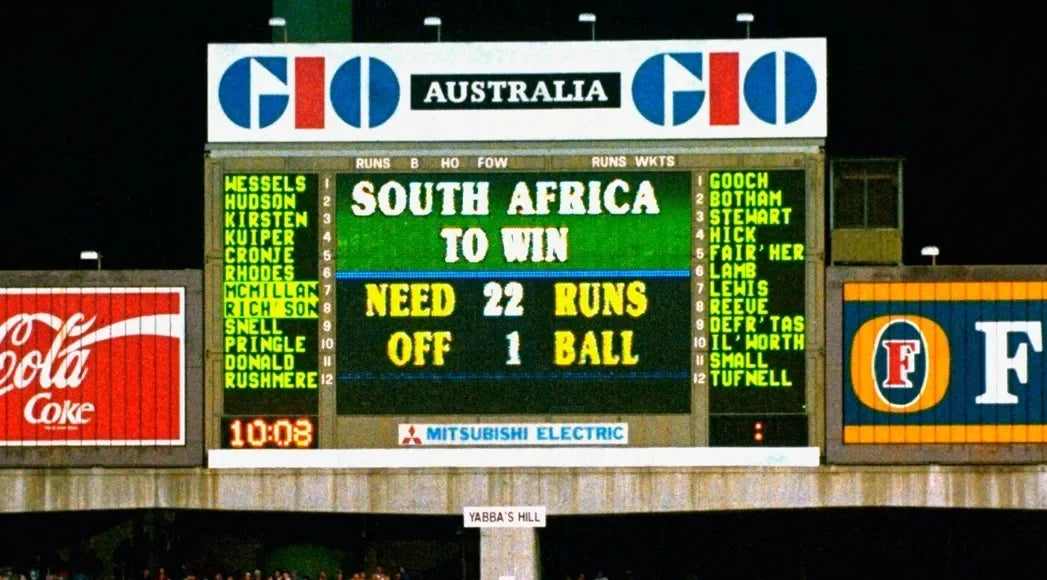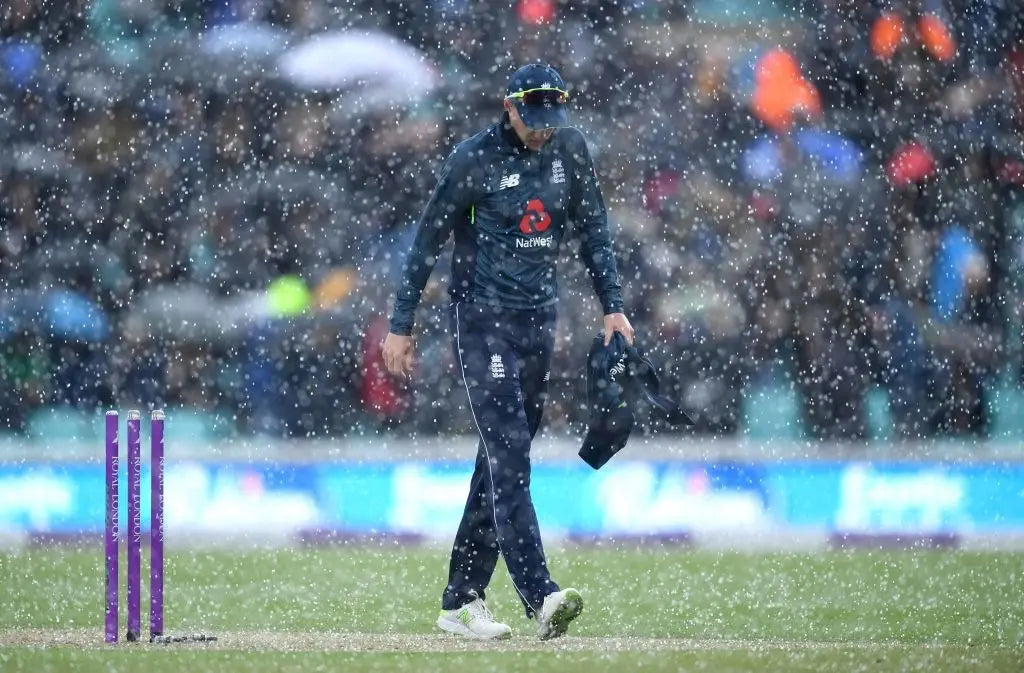Understanding the Duckworth Lewis Stern (DLS) Method in Cricket
Imagine a T20 game being played over three days! But how’s that even possible? Cricket is a sport filled with intricacies and one which heavily relies on the weather conditions. The IPL Final between Chennai Super Kings and Gujarat Titans was played over three days due to rain. The first day was completely called off, and the 100,000 fans that were present at the largest cricket stadium, the Narendra Modi Cricket Stadium, to witness the electrifying atmosphere were left disappointed. Rain interrupted the second day, too, and the match had to be shrunk to 15 overs in the second innings. The anticipation that was built was all shrinking. If it wasn’t for the tense finish and MS Dhoni lifting his fifth trophy, the match could’ve been termed as the worst IPL Final.

Credit: Mint
But how did the authorities and the match officials decide that the match should be shrunk to 15 overs in the second innings?
What is the DLS Method in Cricket and what is its full form?
The answer to the question about the IPL final is a mathematical method called the Duckworth-Lewis Stern Method or DLS Method. See, cricket is one of the most dynamic sports and involves a lot of intricacies. One of these intricacies involves using math, data, and statistics to predict the score of a team in case of rain or any other interruption.
Read More: Cricket Rules
What is the Origin of the Duckworth Lewis Stern Method in Cricket?
The origin and history of cricket were of being an outdoor game and is quite difficult to play in the rainy and winter seasons, unlike football, which is also an outdoor game but could be played in any of these seasons. This game is more complex, requires more maintenance, and the leather ball needs to bounce properly. This was the reason this game was being played only in the summer. When this sport was turned into a professional sport, it had to overcome all the seasonal limitations and cricket matches were being played throughout the year. So, a productive overs method was introduced to tackle these problems but this method was far from being perfect and gave rise to a huge controversy.
Also Read: Football vs Cricket
In the 1992 ICC ODI Cricket World Cup Semi-Final between South Africa and England Cricket Team, SA needed 22 of the 13 balls when it started raining. After the rain, calculating with the productive method would require South Africa to score 21 runs off one ball. You can clearly see how messed up this method was.

Credit: Nirav Khanal
So, it was necessary to find out a method that would match the pace of the ongoing game, in case of an interruption like rain. In 1997, two statisticians named Frank Duckworth and Tony Lewis came up with the DL Method, called the Duckworth-Lewis method back then. It was later renamed to DLS after Steven Stern became the custodian of the method and the Full form of the DLS Method came to be the Duckworth Lewis Stern Method.
How to calculate using the DLS Method in Cricket?
Let’s first understand the basics before getting deep into the calculation. When a test match is washed out, the match can be declared as a draw, but same cannot be done for ODIs and T20s and it’s important to find a winner. Thus, the DLS Method applies only for limited over games, like ODIs and T20s.
When does the DLS Method come into play?

Credit: ICC ODI Cricket World Cup
There can be two situations when the DLS method can come into play.
First, if it rains only after one innings is played, and second, if it starts raining during the second innings.
Now, the question arises: What if it starts raining in the middle of a game?
A cricket match can’t be rescheduled for another day unless it is a match of high magnitude and there’s a reserve day in the schedule. But what is a reserve day?
If a knockout match is canceled due to rain, a reserve day is applicable. If at least ten overs per side are not possible during the semifinals and finals, or if there’s rain in the middle of a match, the play could resume on the reserve day. Any other game cannot be moved to a different day for commercial reasons and because it would not be fair to both teams.
Now, if the match is delayed for any reason in the second innings of the game, the DLS method tries to set a fair target for the team batting second. This method helps to set a target of the same difficulty as before, i.e., the original score. It applies the basic principle that scoring runs depends on two factors: the number of overs remaining and the number of wickets left. So, this method uses these factors proportionately to set a revised target.
Rain also effects the ground conditions and the cricket pitch, so read about it and understand more about how to tackle wet surfaces.
What is Par Score and Target Score in DLS Method?

Credit: ESPN Cricinfo
1. The initial setting involves assigning a "par score" to each team, which represents the expected score if they faced their full quota of overs without any disruptions. When interruptions occur, reducing the number of overs, the DLS method calculates the "resource percentage," reflecting the proportion of available resources, including overs and wickets.
For example,
If 10 overs are lost in a 50-over match, the resource percentage is 80% (40 overs available out of the original 50).
2. The par score is then adjusted according to this percentage, resulting in a new "target score" for the team batting second.
For example,
If a team was initially set a target of 250 and the resource percentage is now 80%, the adjusted target would be lower.
3. Importantly, the DLS method also considers the number of wickets lost, acknowledging the impact on a team's batting strength.
An example for this would be too difficult to understand as it takes into account multiple graphical and tabular representations.
What is the Duckworth Lewis Stern (DLS) Method Formula? You can calculate a simulation here:
Conclusion:
A sport must have the adaptability to stand the test of time. The game of cricket has ample opportunities to innovate and evolve. This game has been proving this since its inception. It overcame the problem of seasonal and weather limitations to survive the challenges of being a professional game. The DLS method proved to be so crucial in the course of the game. However, this method anticipates the mentality and passion of cricketers to change the game single-handedly. But, we can’t take these into account, as we have to follow the data statistically to remain fair. At least, I could say this method has helped cricket maintain its Spirit of Cricket.
Now that you have understood the Duckworth Lewis Stern (DLS) method in cricket, here are some other articles you should read to understand the game evern better.
How to play Cricket | Powerplay and Fielding Restriction Rules | Decision Review System (DRS) | Fielding Positions




Leave a comment